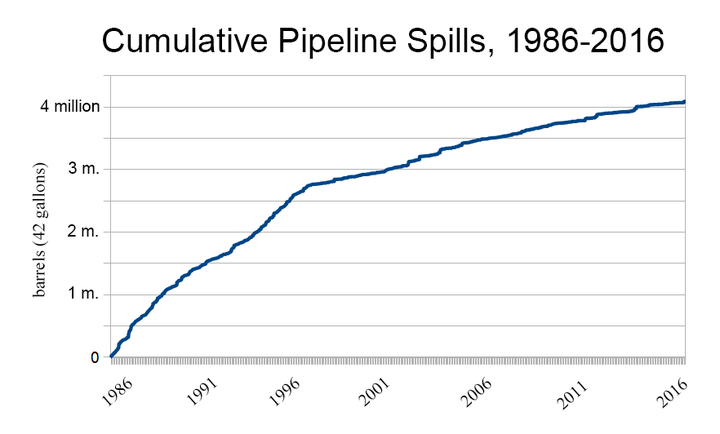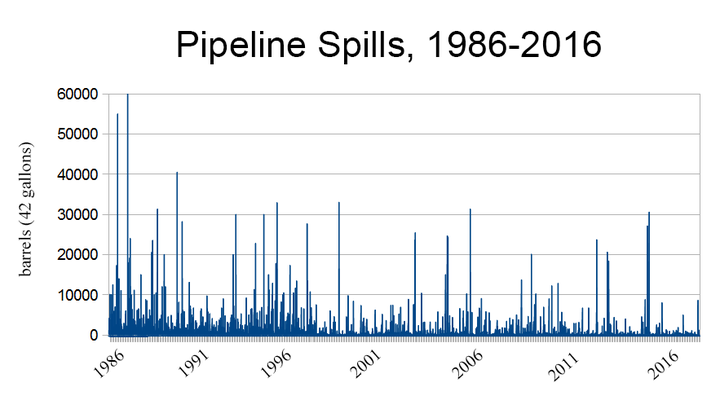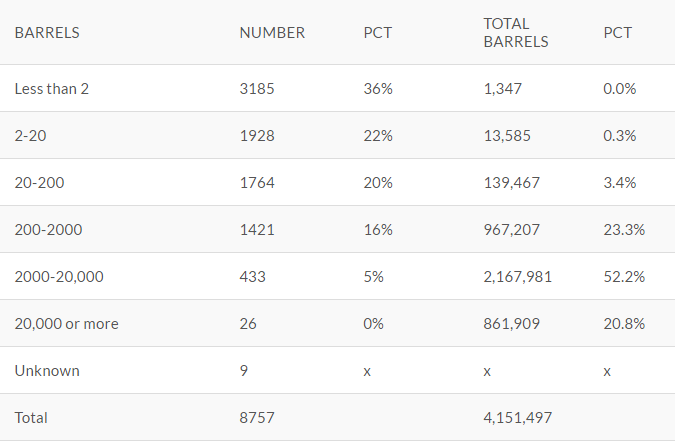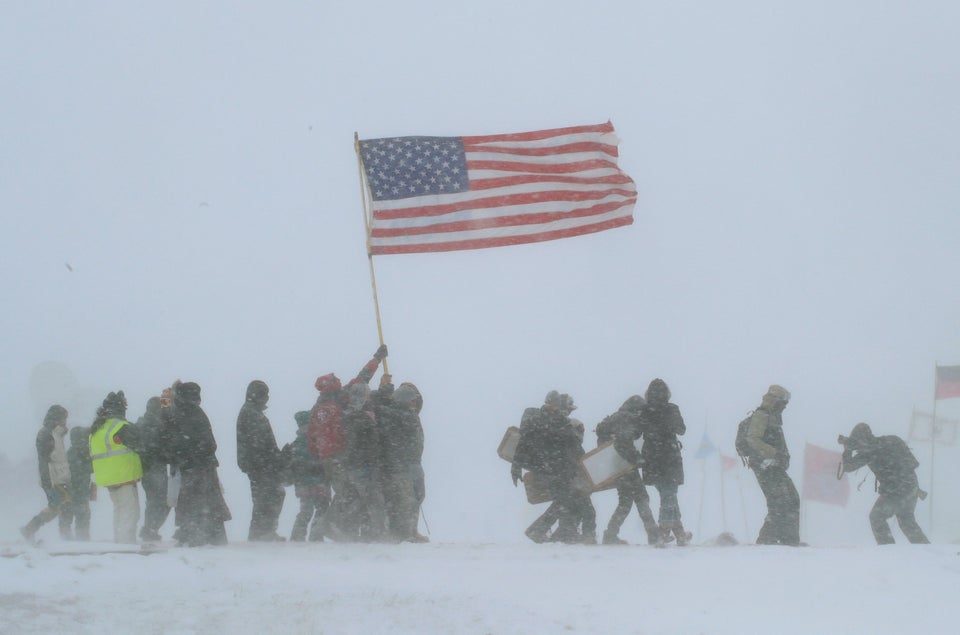(See Version 2 of this video)
A couple months ago, I attended a protest against the Dakota Access Pipeline, which was being constructed near my town of Ames, Iowa. As I watched friends getting arrested in nonviolent demonstrations, I had so many questions ― does this pipeline really pose a threat to land and water?
With the controversy over the recent denial of the permit to cross the Missouri River at Standing Rock, and the requirement for the pipeline to undergo an environmental review, and with the prospects of efforts to build new pipelines after the Trump administration takes office, answering this question is as important now as ever.
My suspicion was that pipeline accidents are rare, but as I investigated, I found that they actually happen all the time. As shown in the mapstory I produced above, in the last 30 years, there have been over 8,700 liquid pipeline spills, averaging nearly one every day.
One, in fact, happened recently only 150 miles from Standing Rock, where over 4,200 barrels (180,000 gallons) spilled into a river. And the spills add up – if the 4.2 million barrels (176 million gallons) that have spilled in the last 30 years were counted as a single spill, it would be the third largest in history, right under the Deepwater Horizon oil spill of 2010, when 4.9 million barrels spilled in the Gulf of Mexico.
Though they may be dwarfed by the larger clean water issues of farm runoff, oil spills pose a great risk to any place it crosses. Many pipelines carry hazardous liquids like crude oil, which are hard or impossible to clean up, and some carry compressed gases, which evaporate when leaked, but can still cause ecological harm. Everything from equipment failures to bad weather to accidents can cause a spill, and they have indeed destroyed farms, and polluted rivers and groundwater.

Opponents of the Dakota Access Pipeline have been saying that it’s not a matter of if the pipeline would spill, but when. And a spill might be large ― most pipeline spills are under 20 barrels (under 1,000 gallons), but dozens happen every year that are thousands of barrels. Unsurprisingly, the size of oil spills increases with the size of the pipeline, and the pipelines that have been proposed in recent years are very large ― if the Dakota Access Pipeline is operational, it would deliver 470,000 barrels a day.
The likelihood of an accident is something oil companies concede ― when the Keystone XL pipeline was proposed in 2011, the pipeline company estimated that there would be a likelihood of 11 significant spills (over 50 barrels) over its 50-year lifetime.
Critics charged that the estimates were low ― an independent assessment by University of Nebraska professor Dr. John Stansbury claimed that a more likely number would be 91 significant spills when looking at the actual incidence of spills on comparable pipelines with the same data that was used to make the mapstory above.
Dr. Stansbury’s assessment went further and claimed that it would take 10 times longer to shut down a pipeline than the company’s estimate, and provided worst-case scenarios, including one where 120,000 barrels could spill into the Missouri River, and 180,000 could spill in the Nebraska Sandhills, seeping into the Ogallala Aquifer, one of the largest groundwater sources in the world. The Keystone XL Pipeline would have carried 830,000 barrels per day, and was rejected by the Obama administration.


What are the chances of a scenario where the Dakota Access Pipeline or a similar pipeline were to spill into a water body? Spills are spread across 190,000 miles of pipelines, and very small portions go over rivers. The likelihood of a pipeline spill affecting drinking water by the Missouri River may not be huge, but it is there.
Opponents feel that any threat is a threat ― and the threat is large. And water contamination does happen. Pouring over the tables, I found that since 2002, when the government started detailing environmental effects, over 10 percent of the spills seeped into water bodies, totaling over 145,000 barrels. The largest happened in Michigan in 2010, when a pipeline deteriorated and spilled over 20,000 barrels of crude oil, over 8000 of which spilled into the Kalamazoo River.
Regardless of the likelihood of a spill, it is also important to note that what happened at Standing Rock is considered a matter of principle. The Army Corps rerouted the pipeline to avoid threatening the drinking water of the residents of Bismarck, North Dakota, right through territory disputed by the Sioux, threatening their drinking water, as illustrated in the map of the pipeline I coordinated below.
The incidents at Standing Rock triggered the largest gathering of people of Indian nations in over 100 years, and thousands of people camped out at the edge of the pipeline in North Dakota. As I detailed in a recent radio interview about the mapping effort, it’s time that Natives stop being ignored and be put on the map as well.
Now, I have heard some people acknowledge the dangers of pipelines, but claim that the efforts are impractical, saying “oil will flow anyway” and “new pipelines are the safest way for oil to be transported.” Yet many opposed to oil pipelines say that we need to allow ourselves to move toward renewables, a claim that I think is entirely practical when you look at the facts ― renewables have been rising exponentially, driven by the market, and vastly outpacing other forms of energy, and the technology is no more new than the fracking technology that enabled the Dakota Access Pipeline.
Countries like Germany already produce over a third of their electricity from renewables. With electric cars on the horizon, the necessity of oil ― and oil spills ― is not a fact.
The data for this article was processed from the Pipeline and Hazardous Materials Safety Administration (PHMSA) using MapStory.org, an open mapping website in development.

